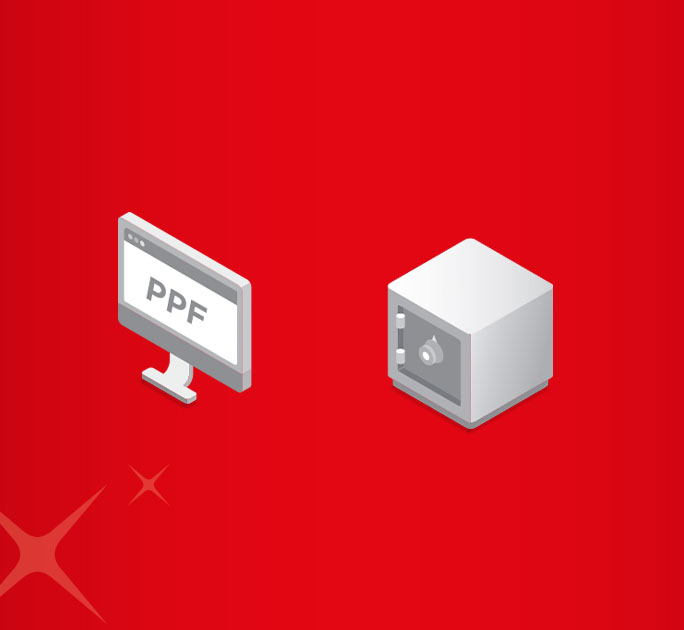- Save
- Invest
- Borrow
- Pay
- More
- NRI Banking
- Customer Services

How to calculate Return on Fixed Deposits?
Planning to open a fixed deposit account? Find out how you can calculate returns on it before investing.
Key Takeaways
- A Fixed Deposit is one of the safest investment instruments.
- FD returns are of 2 types - Cumulative and non-cumulative returns.
- FDs can serve as a source of income if you opt for Monthly or Quarterly interest payouts.
- The formula to calculate returns on FDs is A= P(1+(r/n)^n*t.
- Returns and interest earned on FDs is fully taxable.
Introduction
A Fixed Deposit is one of the most sought-after financial instruments amongst investors across the globe. It is also a safe instrument through which you can earn a monthly or quarterly fixed income. You also have the choice to earn interest cumulatively when the deposit matures. Since the returns on Fixed Deposits don’t get affected by market fluctuations, the risk factor is considerably low. In this article, we will see how to calculate Fixed Deposit return in a few simple steps.
What are returns on Fixed Deposits?
The returns on Fixed Deposits are the fixed rf interest that you get for investing your money in a Fixed Deposit account. The return is generated throughout the tenure of the Fixed Deposit. For instance, if you make a Fixed Deposit of 5 years, you will earn the returns at a fixed interest rate for this tenure. This interest rate is altered by the Reserve Bank of India (RBI) from time to time and is known as the base rate. Then the individual banks or NBFCs fix their rate of return above the RBI-approved base rate. As such, the interest rate on FDs varies from one bank to another. However, the average interest rate on FD is around 5.5% or a little above, and the average range is about 3% to 7% (approximately). This interest rate is generally for all Fixed Deposit holders, except senior citizens, who get 0.50% more interest on their Fixed Deposits.
How to calculate returns on Fixed Deposits?
If you want to know how to calculate returns on Fixed Deposits(2), you need to decide whether you want the interest earned on the FD to be reinvested. If you opt for this method of returns, you are considering cumulative returns.
The formulae for calculating the returns on Fixed Deposits is
A= P(1+(r/n)^n*t
Here,
A = Amount you will receive at maturity of the FD
P = Principal amount you invested
r = Rate of interest
t = Number of days
n = Frequency of compounding
Suppose you invested INR 500,000 for five years and the rate of interest is 6.5%, and it is compounded quarterly. So, going by the formulae:
A = INR 500,000{[1+(0.065/4)]^(4*5)} = INR 68,5043
So, the return you get is INR 185,043.
Non-cumulative return – when you don’t reinvest the interest
If you take interest payout every quarter and do not reinvest the same, the quarterly interest amount would be INR. 7,938.
What is the benefit of returns on Fixed Deposits?
The following are the basic benefits of returns of Fixed Deposit:
- The return is subjected to minimal risk. There is no market risk involved as the money is not put into the stock market.
- You get a fixed rate of return as per your chosen investment tenure. However, if the rate is altered by the RBI, then the banks may change the interest rates they offer.
- Even if the bank announces new rates, your existing FD will continue to receive the same returns, and the returns rate will change if you choose to reinvest your current FD upon maturity.
- You can get loans against your FD.
Tax on Fixed Deposit returns
Besides knowing how to calculate fixed deposit return, you should also be aware of its tax implications. Under section 80C of the IT Act 1961, you can invest up to INR 1.5 lakh in a Fixed Deposit account (tax-saving scheme). However, both the returns earned on an FD and the interest payout is fully taxable. The financial entity with which you create your FD deducts TDS if the interest amount on interest earned through FD exceeds INR 40,000 in a financial year. For the same, they issue a TDS certificate as well.
Conclusion
While calculating returns on Fixed Deposits, be aware of the type of interest applicable to the FD account, as it can be cumulative or non-cumulative. You should opt for cumulative interest and payout if your goal is to create a corpus. Conversely, you can opt for a non-cumulative payout, i.e. monthly or quarterly interest, if you want your FD to generate a regular and fixed source of income.
If you prefer to save time and effort and open an FD account remotely, download DBS Bank app right away. Also, open your savings account with us!
*Disclaimer: This article is for information purposes only. We recommend you get in touch with your income tax advisor or CA for expert advice.











